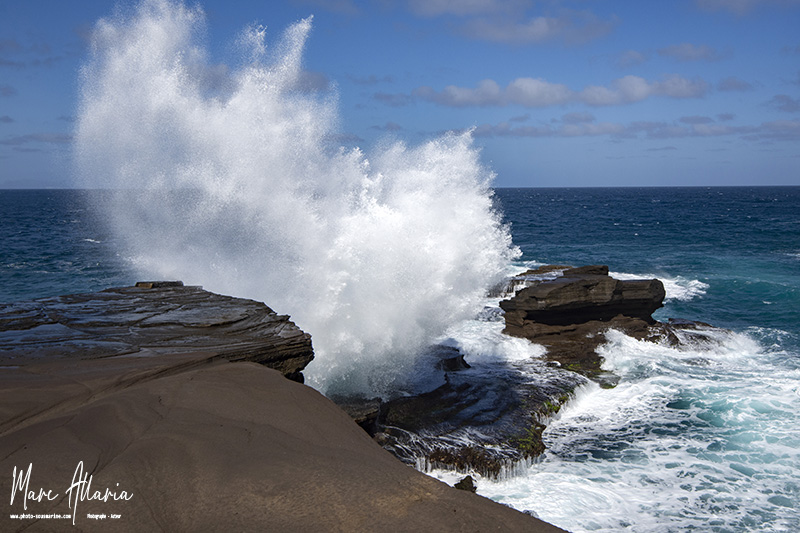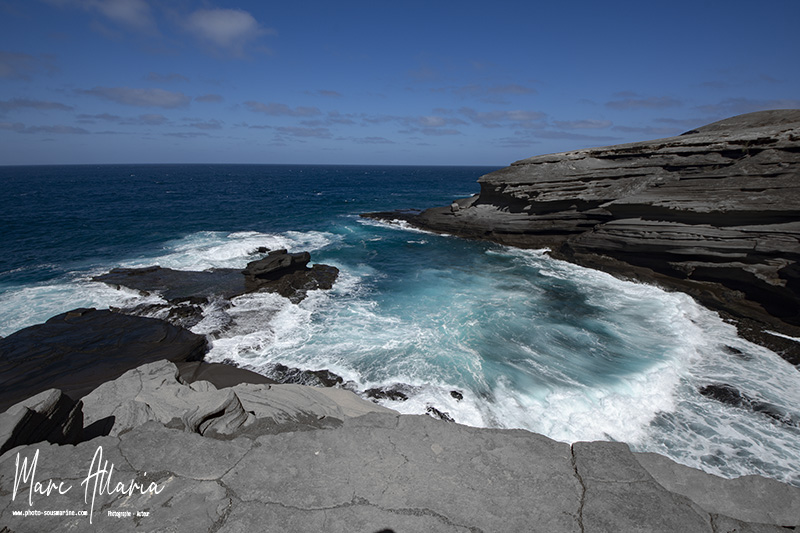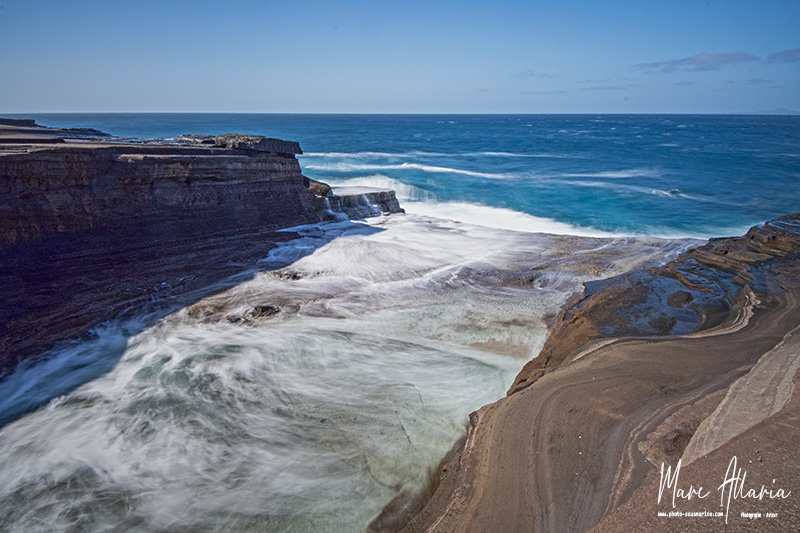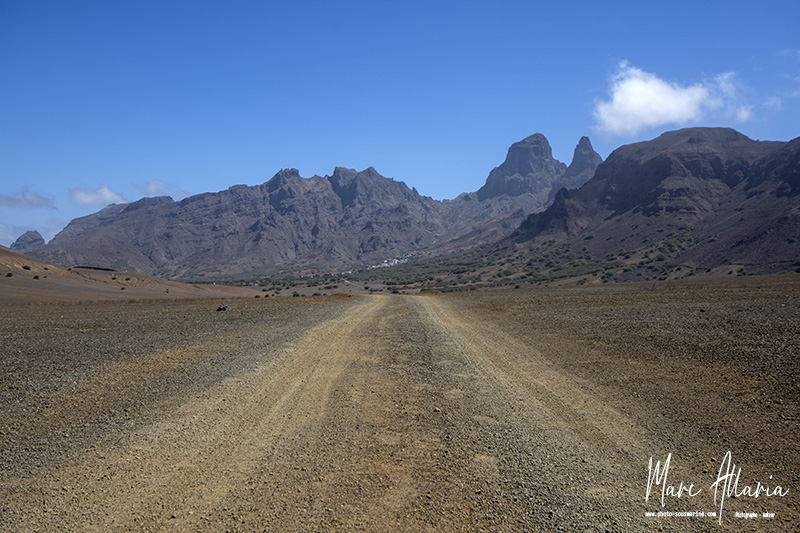As my primary language is not English, there are probably some mistakes in my translation.
Remember that the person who speaks here is NOT me, Vincent Celier (@vcelier), but Marc Allaria (@marc-allaria), a French guy.
MAESHA'S LONG ROAD
CABO VERDE
SÃO NICOLAU
CARBEIRINHO
Incoming swell
There is no island in Cabo Verde which alone represents the entirety of the country's landscape diversity. But if one of them were to approach it, it would undoubtedly be São Nicolau. Among all the curiosities of the island, the place called "Praia do Carbeirinha" remains one of the most spectacular places by the sea. Admittedly, the road development works have been left on hold a few tens of meters of the site, which may suggest that the mass tourist influx could spoil this spectacle. But that will be for later. Here the rare attempts to set up a mass hotel industry have failed and have preferred islands like Sal or Boa Vista. A godsend for those of us who prefer meetings and tranquility, but let's hurry, this virus is not far away.
View of the wave by drone
Getting to the site can be done in different ways. The popular route is to take an "Aluguer" (a shared taxi) which will drop you off at the junction of a dirt road for about a good half hour's walk before finding the site. It is also the cheapest method. The tourist route will get you a pick-up, drop you off on the site, and wait for your return to town. This method is negotiated in town, in Tarrafal. And then, for those who want to know the pain of the Paris-Roubaix cyclists, you have the solution of the bike and ride the 15kms of cobblestones separating Tarrafal from the Carbeirinho site. The most difficult will be to find the mountain bike!
View of the wave by drone
Whatever method of transport you choose, the spectacle is worth it. Who says show at sea, necessarily says big conditions. Strong swell days are ideal for this. Rising from the shallows, the swell explodes here against the coast and offers a shower of water that can rise to more than 10m in height. The site is even sometimes made dangerous. The rock formation is the second attraction of the visit. Not without recalling the sandstones of the city of Petra in Jordan, the formation of the rocks here is quite different. The volcanic and pyroclastic nature of the rock added to the work of the sea and the wind over thousands of years has given a micro setting of great beauty. A site that Cabo Verde has classified among the Seven Wonders of its archipelago.

Breach created by the swell

Surrounding decor







Wonderful translation. Thank you for allowing an english speaker such as myself to enjoy this article.
@vcelier
Wonderful photos as well @marc-allaria
Thank you @daltono. Tomorrow I will publish a new story about Cabo Verde.
Sounds exciting. I’ll be sure to check it out once I see it come across my feed.
Here in english: https://hive.blog/photography/@vcelier/maesha-s-long-road-white-power
Absolutely stunning pictures...I like the first one...As a ship engineer I like sailing...But not I did daily sailings and they generally took maximum 2-3 hours....Great destination point for a sailor hitting waves on the rocks reminds me the lighthouse movie...It is one of the good movie that I have ever watched nowadays...
For the first one, I was not far from breaking waves, sometimes inside !!! Really spectacular place, yes.
I think the English version is 'Cape Verde'. It's a popular tourist destination now, with a 6 hours flight from the UK.
Yes, I know that in English Cape Verde is used most often. Wikipedia says:
This is a country that has multiple spelling in different languages: Cap Vert (French), Kap Verde [German and Danish), Kapverdy (Slovakian), Zöld-foki Köztársaság (Hungarian), ...
So, I preferred to use its name in one of its two official languages Cabo Verde (Portuguese). In Cape Verdean Creole, the name is Kabu Verdi.
Yes there is more and more tourism here. It can be a good thing for local economy, but sometimes a really bad thing for environment. Have a look here to have an idea about what kind of buildings can be built for tourism: https://hive.blog/photofeed/@marc-allaria/my-drone-photo-of-the-day
This place looks stunning. I'm glad to see you writing again @vcelier!
It is a stunning place, for sure !! Mostly Sao Nicolau island.
@tipu curate
Upvoted 👌 (Mana: 14/21)
Great Photography and it was well packaged with high Photography quality expression. Keep it up my friend. @vcelier
Thank you, I try to do my best.
@mattsanthonyit - Next part here in english: https://hive.blog/photography/@vcelier/maesha-s-long-road-white-power
Wow! These are perfect!
Bonjour @vcelier , voici un autre texte ici : https://hive.blog/story/@marc-allaria/la-longue-route-de-maesha-white-power